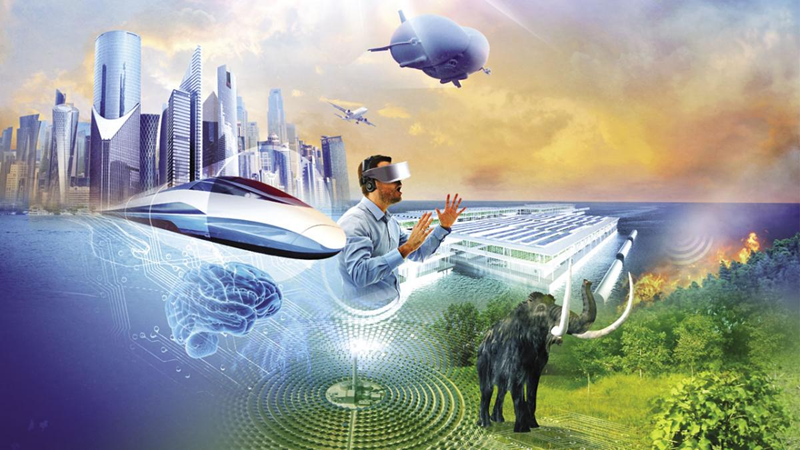Hiking, once a simple pastime enjoyed amidst nature's beauty, is now intersecting with the cutting edge of technology. As outdoor enthusiasts seek to enhance their experiences and push the boundaries of exploration, the integration of IT into hiking gear and accessories is becoming increasingly prevalent.
From advanced navigation systems to wearable tech designed for outdoor adventures, the future of hiking is being shaped by innovative IT solutions. In this article, we'll delve into the predicted trends and advancements in outdoor tech that are poised to revolutionize the hiking experience.

Smart Navigation Systems
Traditional maps and compasses are being replaced by sophisticated GPS devices and navigation apps tailored for hiking. The future of smart navigation in hiking will see advancements such as augmented reality (AR) overlays, providing real-time guidance by overlaying digital information onto the natural landscape. These systems will offer enhanced route planning, geotagging, and even safety features like real-time weather updates and emergency alerts.
Wearable Technology
Wearable tech is increasingly becoming a staple in outdoor pursuits, and hiking is no exception. In the future, hikers can expect to see wearable devices designed specifically for their needs. This includes smartwatches with robust tracking capabilities, biometric sensors to monitor vital signs, and even clothing embedded with flexible displays for displaying navigation instructions or health metrics.
Eco-Friendly Gear
As sustainability becomes a focal point across industries, hiking gear manufacturers are incorporating eco-friendly materials and designs into their products. In the future, IT advancements will further this trend, with gear featuring renewable energy sources such as solar panels integrated into backpacks to power electronic devices or biodegradable materials used in the construction of tech-enhanced hiking equipment.
Artificial Intelligence (AI) Assistance
AI-driven assistants will play a significant role in the future of hiking, offering personalized recommendations based on user preferences, weather conditions, terrain difficulty, and more. These AI-driven assistants could help hikers plan their trips, suggest optimal routes, identify points of interest along the way, and even provide educational insights about the flora, fauna, and history of the area.
Connectivity in Remote Areas
One of the challenges of hiking in remote locations like Vier Quellen weg is the lack of connectivity. However, advancements in satellite technology and mesh networking are poised to change that. In the future, hikers can expect to stay connected even in the most isolated environments, enabling real-time communication, location sharing, and access to online resources such as trail updates and emergency services.
Gamification of the Hiking Experience
Gamification techniques will continue to be employed to make hiking more engaging and rewarding. In the future, hikers may use mobile apps that turn trails into interactive games, where users earn points for reaching certain milestones, unlocking achievements, or participating in challenges. This gamified approach not only adds an element of fun to hiking but also encourages exploration and physical activity.
Enhanced Safety Features
Safety is paramount in outdoor activities like hiking, and future advancements in IT will focus on enhancing safety measures. This could include wearable devices equipped with emergency alert systems that automatically notify rescue services in case of accidents or injuries. Additionally, drones equipped with advanced imaging technology may be deployed to assist search and rescue operations in remote or rugged terrain.
Environmental Monitoring and Conservation
With increasing concerns about environmental degradation and climate change, IT solutions will play a crucial role in monitoring and conserving natural habitats. Future hiking gear may incorporate sensors for collecting environmental data such as air quality, temperature, and biodiversity metrics. Researchers and conservationists can use this information to track changes in ecosystems and implement targeted conservation efforts.
Community Building and Social Networking
Hiking is often a social activity, and future IT developments will facilitate community building among outdoor enthusiasts. Hiking apps and online platforms may evolve to include features such as group messaging, event planning, and shared photo galleries. These platforms will not only help hikers connect with like-minded individuals but also foster a sense of community and camaraderie among outdoor adventurers.
Sustainable Transportation Solutions
Transportation to hiking trailheads often involves driving, which contributes to carbon emissions and environmental impact. Future IT solutions may focus on promoting sustainable transportation options, such as carpooling networks, electric vehicle charging stations at trailheads, and integration with public transportation routes. By reducing reliance on single-occupancy vehicles, these initiatives can help mitigate the ecological footprint of outdoor recreation activities like hiking.
Conclusion
The future of hiking is undoubtedly intertwined with advancements in Information Technology. From smart navigation systems and wearable tech to AI assistance and eco-friendly gear, outdoor enthusiasts can look forward to a host of innovative solutions that will enhance their hiking experiences. As technology continues to evolve, the line between the digital and natural worlds will blur, opening up new possibilities for adventure and exploration amidst the great outdoors.


